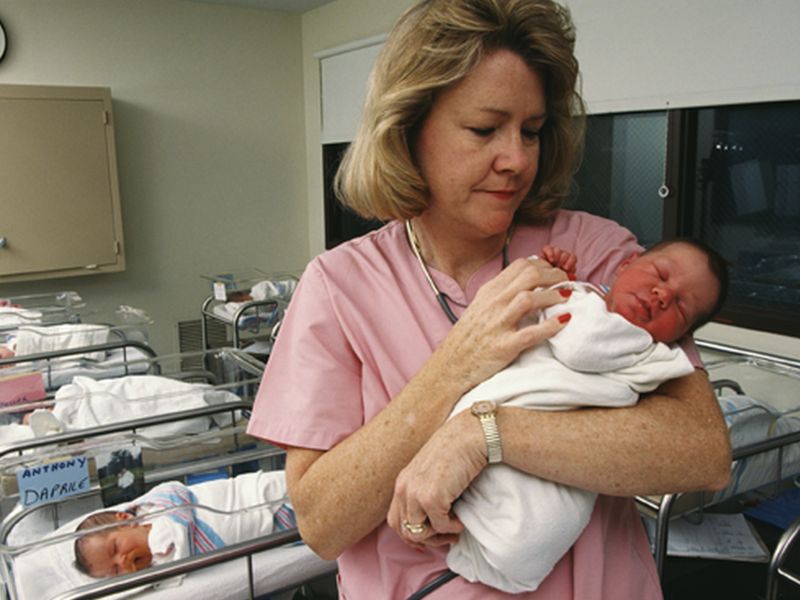Well being Care Spending for U.S. Children Jumped 56 P.c in Much less Than 20 Years
 By Steven Reinberg
By Steven ReinbergHealthDay Reporter
TUESDAY, Dec. 27, 2016 (HealthDay Information) -- The price of holding American youngsters bodily and mentally wholesome elevated 56 % between 1996 and 2013, a brand new research finds.
Well being care expenditures jumped from practically $150 billion in 1996 to greater than $233 billion in 2013 for these 19 and youthful, researchers discovered.
Routine new child care within the hospital accounted for the most important share of spending in 2013. Subsequent highest have been consideration deficit hyperactivity dysfunction (ADHD) and routine dental care, together with checkups and braces, the researchers mentioned.
The findings have been revealed Dec. 27 in JAMA Pediatrics.
"If you place spending on kids within the context of all well being care, spending on kids has been comparatively low," mentioned Rachel Garfield, a senior researcher on the Kaiser Household Basis. The muse focuses on nationwide well being points.
"But it has led to raised entry to care and even some higher long-term outcomes for youngsters," mentioned Garfield, creator of an editorial accompanying the research.
And by pinpointing areas the place prices are rising, policymakers can decide whether or not these particular will increase are cost-effective, mentioned the research's lead researcher, Joseph Dieleman.
Spending on sure situations, together with bronchial asthma and autism, are outpacing the typical development price for youngsters's well being care spending, mentioned Dieleman, an assistant professor of world well being on the College of Washington.
"Circumstances equivalent to ADHD, bronchial asthma, congenital anomalies, accidents and autistic spectrum issues have spending that's growing extra rapidly," Dieleman mentioned. "As well as, spending on newborns, particularly in properly new child care within the hospital, is rising at a quick price."
The most important share of kids's well being care spending is aimed toward stopping sickness and incapacity via "properly care," Dieleman mentioned. This contains new child care the primary few days of life, youngster checkups, dental visits, and being pregnant and post-pregnancy take care of teen moms, he famous.
In the meantime, spending on treating medical issues is dominated by a number of main situations, together with ADHD, bronchial asthma, and higher respiratory infections, he mentioned.
"Understanding the place this development is and evaluating if this spending has been environment friendly and applicable are the subsequent steps in bettering the allocation of well being sources for youngsters's well being care," Dieleman mentioned.
In 2014, complete well being care spending in the USA reached practically $three trillion, most of which was spent on adults, the researchers identified.
"We see on this analysis that spending on kids grew slower between 1996 and 2013 than spending on adults," Dieleman mentioned. "In per capita phrases, there may be a lot much less spending on kids than adults."
This is smart, since kids typically endure much less from costly power situations. Nonetheless, spending on youngsters is rising, even after accounting for inflation, he mentioned.
General, Garfield mentioned, spending on kids's well being care is having optimistic outcomes that can be seen in maturity, making it price the fee.
"Spending on kids is resulting in the outcomes that most individuals would agree we would like," she added. "Youngsters are capable of entry well being care providers after they want them, which is resulting in more healthy adults -- adults who usually tend to end college and be productive, and that's the purpose of spending on these providers."
From 1996 to 2013, per-child well being care spending elevated from $1,915 to $2,777, the researchers discovered.
By 2013, practically $28 billion went to newborns within the hospital. Spending on ADHD reached nearly $21 billion. Dental care commanded $18 billion, and bronchial asthma reached $9 billion, Dieleman mentioned.
In contrast, spending on childhood ADHD in 1996 was just below $eight billion, Dieleman mentioned.
Garfield could not say from these information whether or not too many youngsters are being handled and medicated for ADHD. "That is one thing future work must deal with," she mentioned.
The researchers identified that these findings solely signify cash spent on well being care and don't take note of different prices, equivalent to youngster care bills and oldsters' misplaced wages.
Additionally, issues nonetheless exist in accessing providers, notably dental and psychological well being care, Garfield mentioned.

Copyright © 2016 HealthDay. All rights reserved.
SOURCES: Joseph Dieleman, Ph.D., assistant professor, international well being, College of Washington, Seattle; Rachel Garfield, Ph.D., senior researcher, Kaiser Household Basis, Washington, D.C.; Dec. 27, 2016, JAMA Pediatrics, on-line
No comments:
Post a Comment